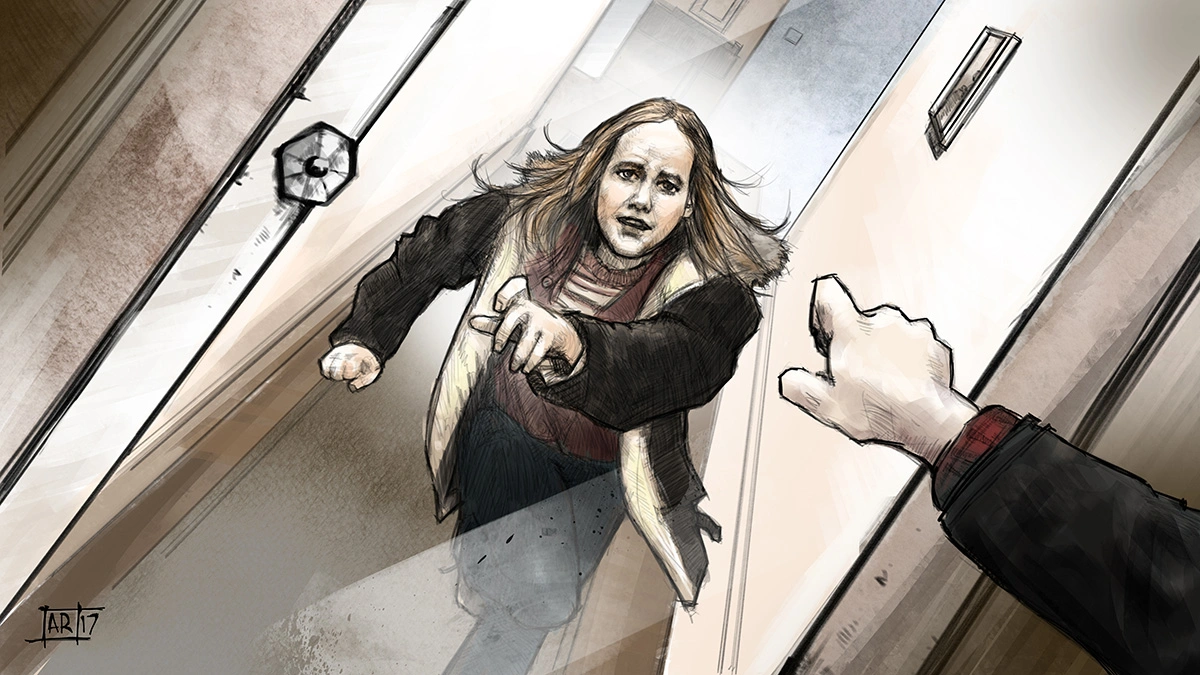
Visual effects artists and aficionados are often asked which movie or shot was their biggest influence, a question that regularly evokes a response about films like Star Wars, Blade Runner or Jurassic Park.
Those films, of course, are all milestones in the VFX world. But in recent years, if that kind of question has come up in conversation, I have started noticing that the mirror shot in Robert Zemeckis’ Contact was being raised more and more – the one where a young Ellie races to the medicine cabinet, with the camera in front of her as she comes upstairs, only to reveal we have been watching her reflection in the mirror. Not only is it a shot considered a milestone in invisible and seamless visual effects, it is a scene that even VFX pros regularly admit they have no idea how it was pulled off.
Contact is now 20 years old, and its visual effects supervisor Ken Ralston sat down with vfxblog to revisit its fine effects work, which was primarily done by Sony Pictures Imageworks, and ranged from the invisible to the fantastical. In the process, I learnt something about that mirror shot I’d never heard anywhere before.
vfxblog: This wasn’t your typical Hollywood blockbuster for 1997, was it, even though it had a lot of visual effects work?
Ken Ralston: Absolutely, I mean, it’s not a movie for the typical summer audience. It’s for adults. So it doesn’t really want to – and in fact, it would have hurt the movie if we had gone for just insane spectacle. So even when the big machine blows up, there’s only a few shots of that happening. It could have been like a five minute sequence of things just blowing up, and doing all kinds of weird stuff but that’s not the point of it. It’s all about whatever the movie means to everybody. And it means a lot of different things.
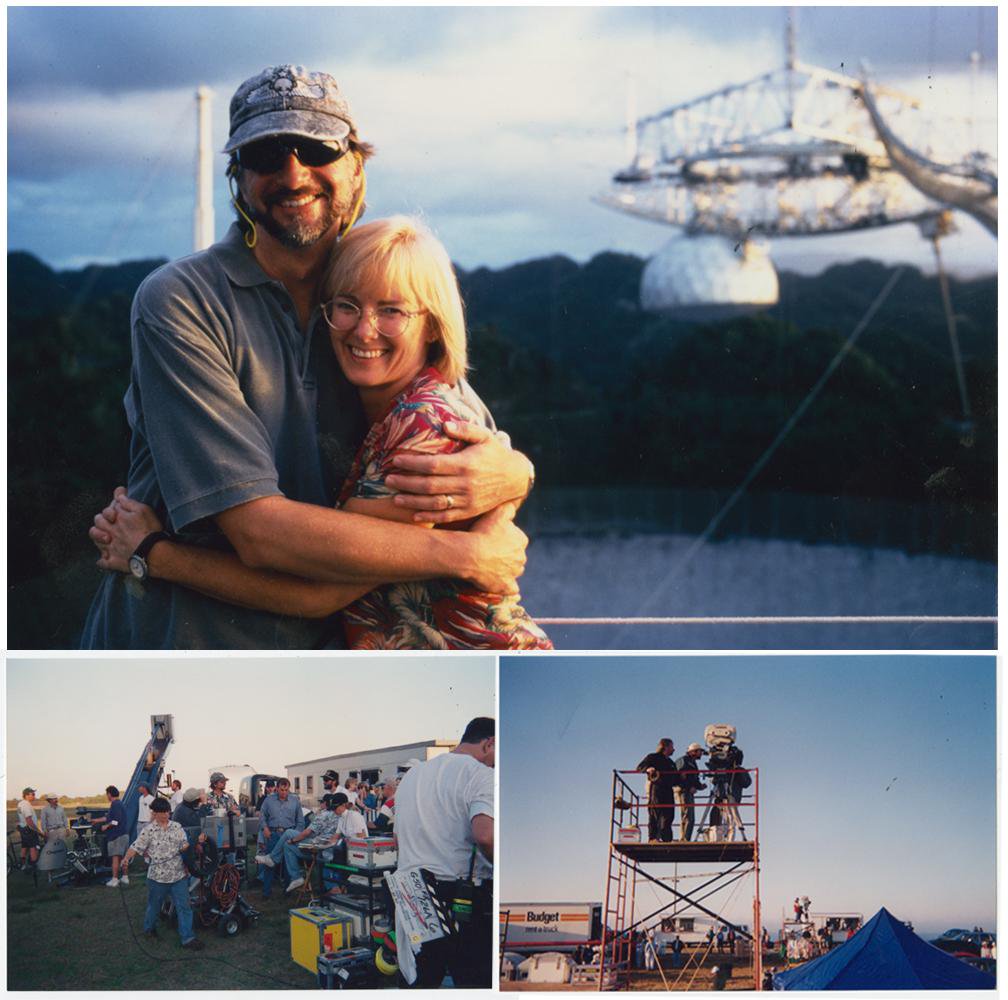
vfxblog: It does start with something spectacular, and that’s the huge pullback sequence through the universe. Can you talk about how that came together?
Ralston: Well, all I can really remember is that it went on forever. A guy that supervised some films with me in the past, Jay Redd, was kind of in charge of the whole entity. He loves astronomy and all that, so as hard as it was, he enjoyed it. My favourite thing is how it works with the sound. It’s not what you’d expect, there’s no giant music fanfare, it’s not all this stuff. It’s all the sounds you’re passing through as you go through the universe. As it floats out there, as you go further and further back in time, it’s just like, wow, what a great idea.
And it just kind of starts there. It’s written on the page. We start seeing storyboards, although they are what they are, we start coming up with some simple animatics I’ll call them, or whatever we were calling them back then, and just kind of starting to run a time frame. How much time does this shot need to do all the work with the sound and everything and what Bob wants to achieve with it. Then you just spend a year on it and then it’s done [laughs].
You start researching planets, I mean there’s so much to do with that, without flying over the surface of each thing and making a deal out of it, you find that place that isn’t trying to just stop you from thinking about what the shot is and just becomes an effect shot for its own sake. You never want to do that.
It’s really just a matter of also looking at others people’s material. What’s been done prior to us getting into it, what kind of effects have been used for planets or nebulae or whatever it is. You just start having many meetings and talking and seeing material and it goes on forever. I know we put the face on Mars that everyone thinks is there so I know that was one little touch we did. We should have had it talking or something [laughs again].
vfxblog: Now, I’ve talked to you a couple times in the past about the mirror shot, but obviously I’d love to explore that again. Mainly, what I’m really curious about is, what kind of early discussions were had about that shot, and what it represented?
Ralston: Well, initially, it wasn’t going to be that at all. One of the things that we were starting to pursue was a very, very early version of what is now called ‘bullet time’, shooting something with stills and using those, like in The Matrix [which came out in 1999]. At the time, we were looking at The Rolling Stones music video that had been done.
She was going to run in and her father is in one of those frozen in time moments and he’d been eating popcorn and he was going to be in mid-fall with a lot of things flying in the air but frozen there while she’s walking around her father, looking at him. Well, that’s how it was going to start.
Now, [screenwriter] Robert Towne said it best about his meetings on Chinatown, calling all of these meetings you have before a movie starts, ‘rational noise’. Which, of course, means everything’s great and everything’s working and it’s going to go this way. And of course, it never does. One of the interesting things, with a director like Bob, and any good director, as the movie goes on, you see, oh, my actress is creating this version of Ellie and the movie feels more like this. And it’s always sort of this malleable thing at that point. So things change for the betterment, hopefully, for the betterment of the movie.
So I think what was happening was, Bob started to take on a whole different way to approach the father’s death without ever seeing him, which is of course great. And just putting the young Ellie in this horrible moment and then shooting it and presenting it in a way that if you’re not paying attention to it, you probably don’t even know anything happened, but there’s something off about it. And it’s just matching the feeling I think she has trying to find the medicine.
vfxblog: So how did you plan it and how did you pull it off? I think people are still bamboozled by it.
Ralston: Well, the idea was to present it in a simple way. The beauty of it is, anywhere else, there’d be cutaways of course to show what you need to know. So first of all, once we had it boarded, and I don’t think we ever did previs in those days on most things, but we knew what we wanted. Plus you have to realise, when you’re on a set you have to be there to let the reality of what you’re shooting dictate the next step sometimes. So the first thing you obviously have to get is her.
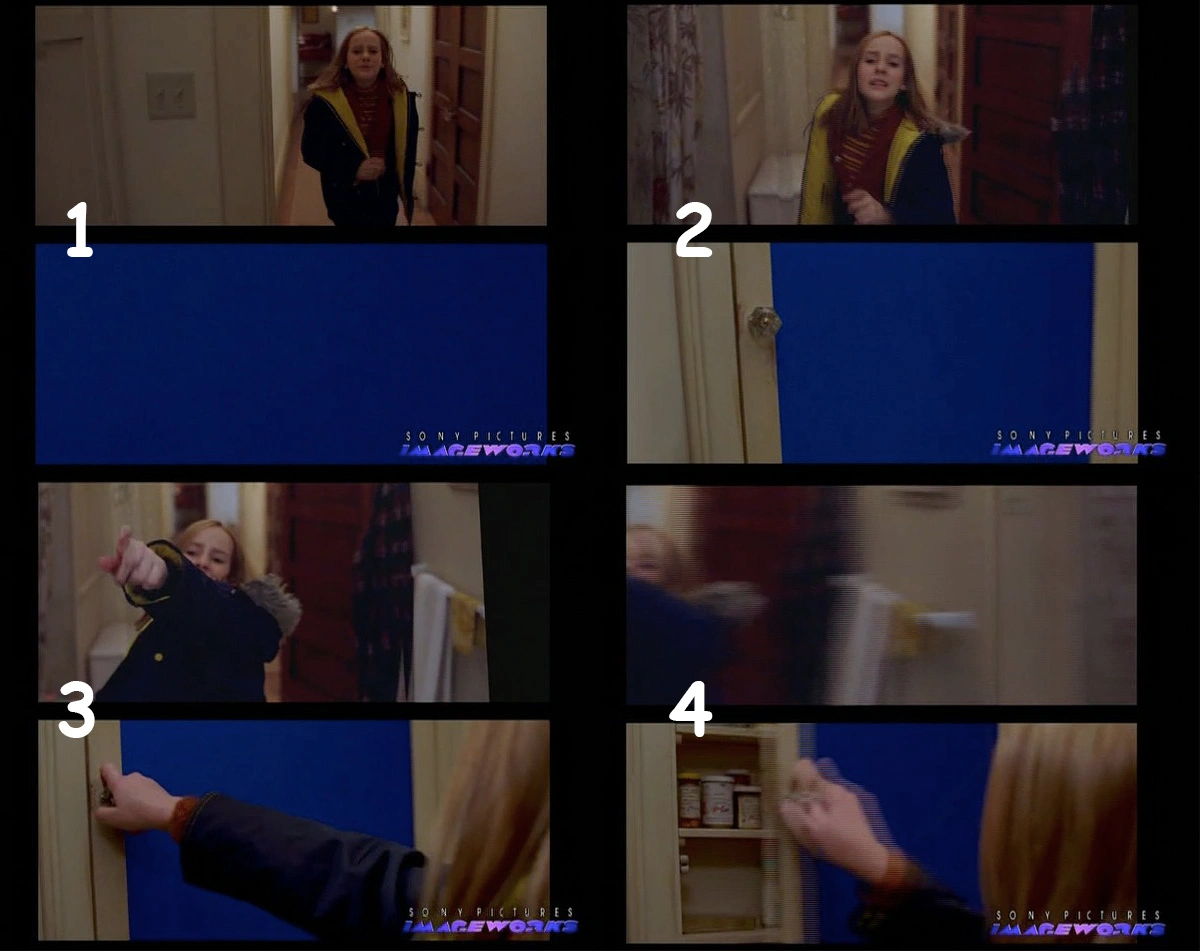
Our camera operator, who was also a great Steadicam operator, had to keep running up those stairs with her over and over, and he was dying. I forget how many takes we got of her running up. Plus there’s this ramp slow down, which is also happening as she runs up, it goes into slow-mo.
So, using all of that as her timing reference, then I try to figure out, well, okay what’s the simplest way of shooting her? Do I have to tell her where to reach so that the hand coming in from the other side matches as if it was a mirror reflection? It’s all just, how fast do we pull out of this mirror?
I’m trying to remember all the pieces that we shot. I know that we pulled back, we had the medicine cabinet obviously that we come into, and then the mirror closes slowly. That’s all these separate pieces. And the only reason to separate them is you never know down the line when the director might say, ‘Could we…’, and then they want to change it somehow. If you can break if up into little minuscule little parts, you can make your job a little easier. Although I don’t think we ever did anything on that.
I know we added bevels on the mirror, because there was no mirror, and it was just a blue screen stuck to a medicine cabinet mirror that should have been there. And we just put a little schmutz on it so it looked like it was a real thing, and on you go.
vfxblog: Maybe part of the appeal and the fond memory of that sequence also is that it’s in slow motion, which means you really get time to appreciate the shot. I think sometimes in visual effects shots these days, they go by so quickly, and they’re almost incomprehensible at times.
Ralston: Yes! I totally agree with you. I think any supervisor in the world would say it’s always great when they’re so fast because you can get away with murder. But a shot like that one with Ellie, it’s just gotta be right or it’s not going to work. Especially in a movie like that, which is as fantastic as it is in its sort of ‘Contact’ way. It never wants to feel that way. You have to be grounded somehow in a movie, or believing in what you’re seeing, or it just doesn’t mean anything.
[For more on the mirror shot, scroll down to the bottom of this interview for a description of how it was achieved from Sheena Duggal, a high speed compositing supervisor on Contact, and now an experienced visual effects supervisor with credits on projects such as The Hunger Games and Agent Carter].
vfxblog: Just in the spirit of invisible effects, there are so many others in the movie, too. I loved the one of Ellie as Jodie Foster running into the satellite dish office. I think you’ve described that as ‘blorphing’ – can you tell me more about that?
Ralston: Okay, well, blorphing. First let’s talk about the word I invented that now it’s, like, part of the lexicon. But, I just came up with this blend of a couple words, trying to find the dumbest sounding one I could. And I thought blorphing sounds so stupid, I’m gonna keep saying it! And now I hear other people say it.
But essentially it was, we were in Socorro, New Mexico, which was really interesting by the way, where all the satellite dishes are. That’s the beauty, by the way, of movies like this, when it works out, is you can be in places you would never be able to be on your own. And you get to know the area, you get to see how they work, you get to wander around the grounds. Besides shooting the movie. And it can be quite fascinating, it’s really neat. In fact I think we also got a private tour of the White House when we were checking out locations for that part of it.
But anyway, the blorph was, we were in Socorro, we’re up in the satellite area. We come down, we’re on a crane if I remember right, we drop down with Jodie in the frame, we start to follow her on the crane arm. And as it touches down, there’s a Steadicam operator on that crane who steps off and he just keeps going, and he chases her towards the door.
And I just had Jodie do a specific movement. Because the shot was so hard, I was trying to find what’s the easiest way I can get her in there? And when she gets to the door, I just had her do this kind of erratic sort of entry into the building, which would be a nice way to kind of blend her and get the door out of the way and get into the set, which was on the Sony Culver lot, which was hundreds of miles away. And we continued the same sort of Steadicam move through our set following her. I forget how many takes we did, but I felt that we had the material to help blend it. Probably be a little easier these days, but I didn’t want to make it too overly complicated.
vfxblog: As you mentioned, even when we get to more of the action shots, with the machine, their still very much ‘storytelling’ type VFX shots, aren’t they?
Ralston: Bob does this a lot in his movies, I don’t know how else to put this. As big a deal as this thing is, it’s a throwaway. It’s not really the point of any of this. Especially the exterior stuff of the machine. Even the one that’s blowing up, it’s all sort of in the distance, and it’s fast.
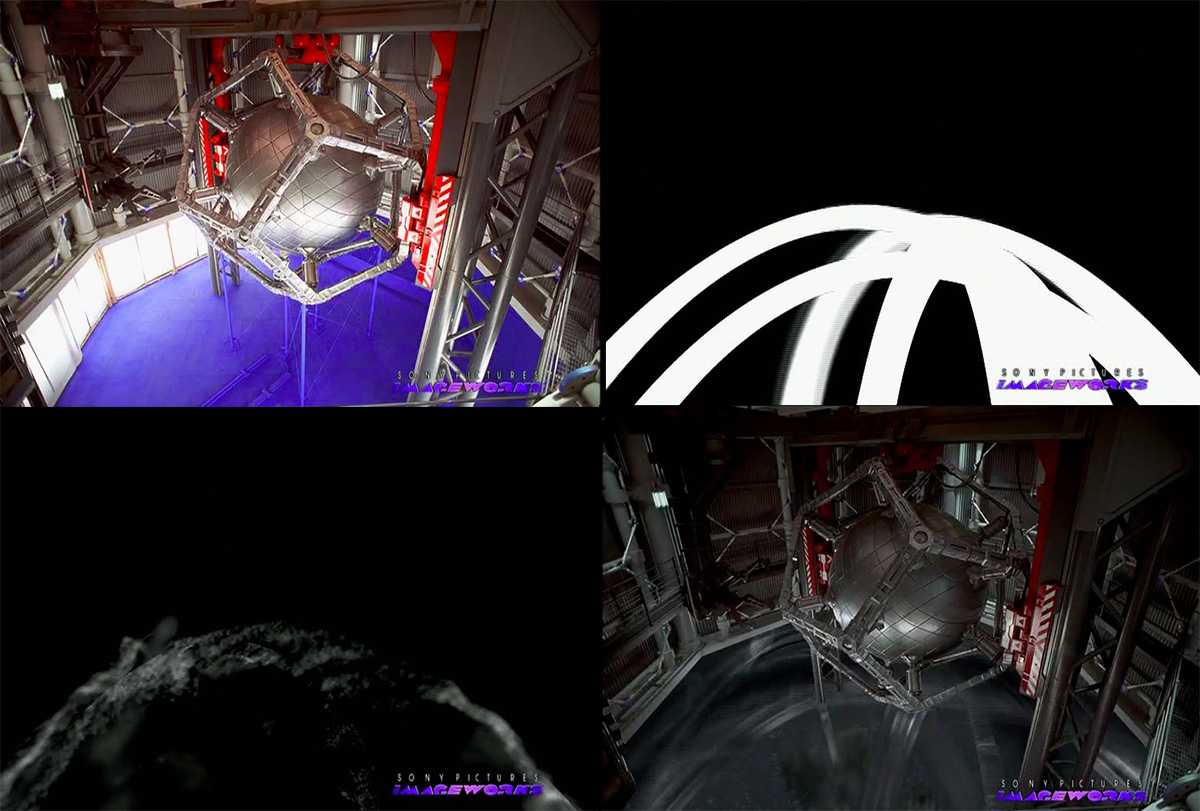
The design of the machine, it just came about. I see a lot of things like this now. But just by looking at interesting odd shapes, you could believe it was anti-gravitational or whatever it would be and it would also give us some visual kinetic energy. You know the spinning rings and everything. At one point, which I thought would have been so cool looking is, they were thinking of maybe showing it being built. And it was going to be built at the bottom of the Grand Canyon. Which would have been so cool to just do.
vfxblog: Ellie’s trip in the pod had some of the more fantastical elements like the wormhole and things that were weightless and coming out of her own body. How did you approach these space-like effects?
Ralston: In the shoot, a couple of people and myself were asked to come up with a lot of what that was. And we just started spitballing all these ideas and coming up with storyboards and going crazy with all kinds of weird imagery, and throwing it at Bob and seeing what was kind of cool or what would help tell the story. And it was kind of a race to the finish line. But then we figured out, okay quickly, what kind of elements do we need? What do we have to do here?
And everyone got involved, Ian Kelly did some great video projections on her face. We had several different groups working on it. Weta Digital did a lot of the work, and ILM did her out of body moments, I believe, where Ellie’s face gets stretched out and you’re hearing two different bits of dialogue. It really was just trying to find, again without going totally off the deep end here, interesting, weird, kind of creepy ways of showing some of those moments. And it’s her point of view. You’re always in there with her. You don’t go outside, because that changes what the movie might be about.
So, that’s kind of what it was, designing it to be her point of view, whether it was real or not. And what she thought she saw, and what does that mean? I mean, what we’re referencing is the poster in her room by the giant dish in Puerto Rico, there’s a poster that shows a planet and the stars Vega and that’s exactly what you see inside the pod with her. That’s what I loved about it. I loved playing the game of what’s in her head or what’s not. Is this real or isn’t it? What exactly is being said here? Because it could be several different things.
vfxblog: When Ellie arrives at the beach, it has that dream-like and surreal feeling. I remember the environment was real but also stitched together, what do you recall about that?
Ralston: Yes, I actually took a crew with me, a small group, and went to this island, Bob threw me these location photos and said, ‘Let’s shoot there! Well, I was the one who shot there. So we kinda went with the basic storyboards again and all of that about what you’d want to see. And then to protect ourselves too you kind of can stitch backgrounds for different looks.

Some of the shots were strictly just what they are. But we did shoot a lot of just pieces so we can put them all together to make the imagery, you can cover more ground with it basically, for whatever you wanted to do in the scene. I wanted to do it that way too because it also sped up our shooting process. So once we had a camera in place, you could shoot a lot of different plates basically to put together later. In any way that the scene might want to slowly be designed. ‘Cause anything changes.
It was just a matter of trying a lot of different things and going, you know, it’s nice, let’s see a little more diffusion. Let’s do a wedge of diffusion. Let’s do a wedge of colour saturation, or not saturated. Let’s try a lot of different things here. Or how prominent do we make this sort of sense of space and stars out there. It’s barely there, but it is there. And again, is this a real beach or is she imagining certain things from her being in Puerto Rico? It’s all very nicely confused.
And we just went through a lot of different intensive looks, and we would just look at them in dailies and we’d start to narrow it down by what felt right for that look, for that beach. And of course, Bob, obviously, is involved. And we would just say okay well it doesn’t want to go so nuts, but it wants to be a beautiful, it wants to be a bit of poetry now in this movie. So what do we want to do that feels just gorgeous without it taking over the movie, because again, it’s about this very strong moment with her and her father.
vfxblog: Do you know what I remember about that Vega beach clip was that back in 1997, people were saying, woh, who had to do the roto on Jodie Foster’s flyaway hairs?
Ralston: Well, she wasn’t there, so it was just background plates and she was against the bluescreen. Not that all the bluescreens were great but, yeah it wasn’t roto. It was her in front of a blue, pulling the usual mattes et cetera, adding just a certain amount of diffusion and sort of a bleached look to everything.
vfxblog: How do you feel about it being 20 years ago – longer, in fact, since you worked on it?
Ralston: At the time I hadn’t been at Sony Imageworks very long. I had this horrible feeling – see, Bob asked the very best of everyone and you have to do the hardest work possible. And so I thought we were either going to do a great job and that would help us survive as a visual effects company, or we would go out in a flaming, meteoric explosion. Either way, it would be definitive. Luckily, they pulled it off, otherwise we would’ve all been out of work. I’m sure people hated me for bringing that project in there, ’cause it was so damn hard for what some people were used to. But to do what we had to do, there was no other way.
MAKING THE MIRROR SHOT
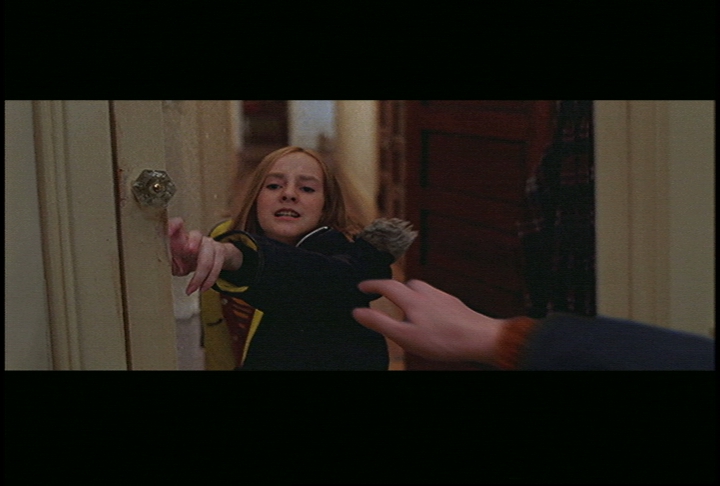
Sheena Duggal, a high speed compositing supervisor at Sony Pictures Imageworks on Contact, breaks down the mirror shot.
This shot is an entirely 2d shot composited on Flame.
It is basically 3 plates:
A) Ellie running in front of a steady cam operator who is running backwards with a focus puller that we had to remove for the entire shot, (not easy back in 1996 to track and patch a moving shot like that).
B) A bathroom cabinet with a blue screen where the mirror should be, Ellie reaching for the knob and opening the door.
C) A reflection plate of the bathroom.
The shot starts on the A plate of Ellie running up the stairs and down the hallway towards camera and as she got closer to where we wanted the bathroom cabinet to be she reached out her hand and grabbed a none existent door handle.
We tracked this plate into the B plate for the reflection in the mirror as the cabinet door opens, the tricky part was to align the fingers in the reflection with the A plate hand. We had to reconstruct the fingers to get the alignment and to sell the shot.
The final part of the shot was to add C plate the room plate reflection as the cabinet door swings open. We used a few comp tricks to create the beveled edge and seamless comp.
When I spoke on Contact at the Academy bake-off, I remember people being amazed that this was actually so simple because it employs what feels like a lot of visual trickery. I am delighted how well this shot has stood the test of time and proud of the talented team of people who helped to create it.
Imageworks is celebrating its 25th anniversary this year with a special presentation at SIGGRAPH on Wednesday, 2 August, at 5:45 pm – 7:15 pm, at the Los Angeles Convention Center, South Hall K. Presenters include Ken Ralston, Jerome Chen, Sue Rowe, Michael Ford and Mark Breakspear.